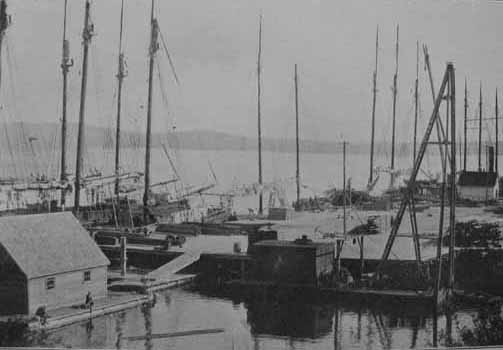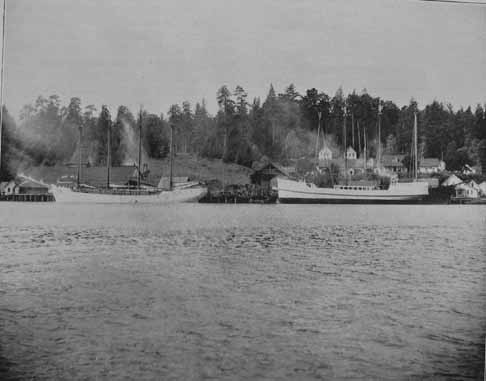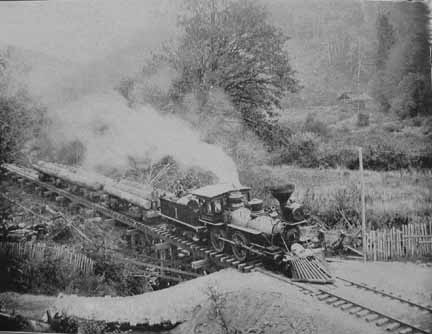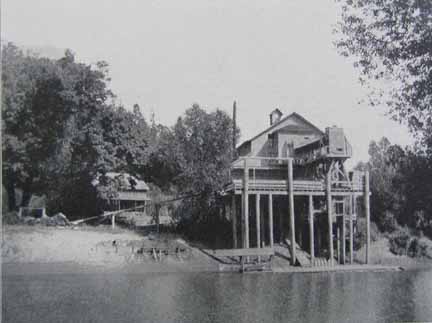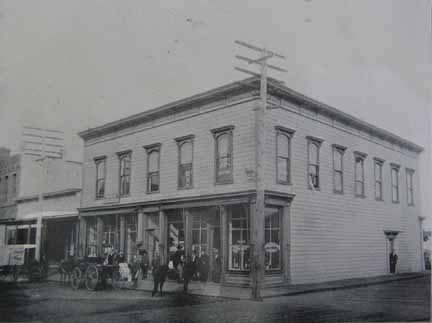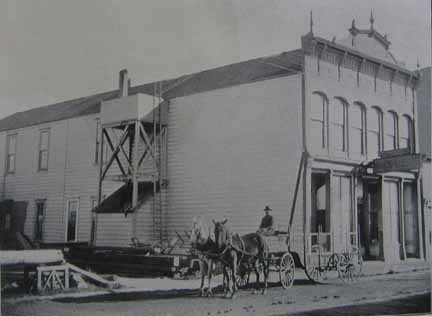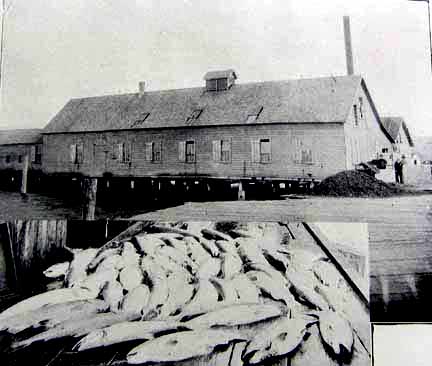(pg.
5-6)
# 12
|
__________
NORTH BEND MILL
______
A city's growth
and prosperity is dependent largely upon her people.
Natural advantages and favorable locations are factors
of no small
importance, but enterprise, energy and business ability
of the people are the
agencies necessary to the growth and permanency of
any important
commercial and manufacturing center. It should
be a source of genuine
pride to every person in Coos county, to note the
growth and development
of the resources and possibilities of North Bend
in an industrial and
commercial sense, and all should encourage so far
as possible those
manufacturing industries that are so desirable to
any community. Probably
no firm in Southern Oregon has done more to develop
this particular branch
of industry than A. M. and L. J. Simpson, with their
wholesale lumber
yards, their saw mills, shipyard, general merchandise
house, and their
perfectly equipped railroad, which taps 6,000 acres
of the finest timber
lands in Oregon. This body of timber lies on
the Daniels and Marlowe
creeks, both of which empty into the south fork of
Coos river. Their
railroad is some eight miles in length, is broad
gauge, and the best equipped
logging railroad on the Pacific coast. Their
main yard and offices, as well
as their planing mills, are located in North Bend;
their planing mill is
thoroughly equipped with modern machinery, including
band, circular and
ripsaws, steam buffer, surface matchers, sticker
trimmers, etc. Their saw
mill has a capacity of 75,000 feet per day, which
is more than three times
the capacity of the old mill which was built sometime
in the early 50's by
Capt. A. M. Simpson of San Francisco. Their
present mill was built in
1887-88 and the old one destroyed. Their product
is not only shipped to
San Francisco, but to foreign ports. During
the past years a great number of
improvements have been made about the plant, amongst
which may be
mentioned their new store and office building, some
fifteen new residences
for the accommodation of the mill employes [sic],
a new dock 100 x 125,
and the old wharf extended out some thirty-eight
feet into deeper water, also
a dock warehouse 40 x 50 feet.
The timber resources of
Coos bay are unexcelled anywhere on the
Pacific coast. Here is found in abundance the
famous Port Orford white
cedar, used extensively in the ship yards of the
bay. The ship-yard owned
and operated by the North Bend mill is probably the
most famous on the
Pacific coast. It was here that the first departures
and improvements in
ship-building were inaugurated by the foremost ship-builder
of the coast,
Capt. A. M. Simpson. The first barkentine,
bald-headed schooner, three,
four and five masted schooners built on the Pacific
coast were constructed
here by their designer [, ] the same Capt. Simpson.
The old brig Arago was
built in 1859 at these yards, and is yet in commission,
forty years old and
still running, which speaks well for the durability
of Coos bay timber and
the thorough workmanship of the North Bend shipyards.
Since the
construction of the Arago, fifty-three vessels have
been built at these yards.
The last one, the four-masted schooner Churchill,
was 172 feet keel, 40 feet
beam, with 11 feet 6 inches depth of hold.
She recently loaded a cargo of
piles aggregating 50,000 lineal feet, and even then
left with less than half a
deck load. She is estimated to carry over 1,000,000
feet of lumber.
The keel has just been laid
at these yards for another schooner, with
dimensions of 180 feet keel, 40 feet beam, and 15
feet 6 inches depth of
hold. Active operations have already commenced
and orders have been
received by manager Simpson to rush work with all
dispatch so that the keel
for another vessel may be laid as soon as possible.
|
